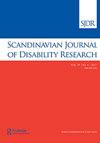Early Screening of Autism Spectrum Disorder Diagnoses of Children Using Artificial Intelligence
IF 1.7
Q2 REHABILITATION
引用次数: 1
Abstract
In today’s society, with fast-growing case rates, medical expenditures, social implications, and lengthy waiting periods after the first screening, there is a need for early screening that is both simple and effective for children who may be at risk for autism spectrum disorder (ASD). This is of utmost significance in light of the significant rise in the case rates of ASDs, as well as the associated medical expenses and social effects, in the contemporary world. In this study, utilizing methods from machine learning, a system was constructed, which was effective in obtaining high performance for identifying the early indicators of ASD in children. The study was carried out by the authors of this paper. The purpose of this research is to categorize ASD data in order to give a fast, easily available, and simple method for supporting the early identification of ASD. It was suggested to use machine learning methods, such as k-nearest neighbors, linear discriminant analysis, the support vector machine (SVM) method, and the random forests (RF) method, to divide populations into those who have ASD and those who do not have it. These machine learning algorithms were examined and tested using standard data collected from the machine learning repository, which contains two classes: normal and autism. The dataset was split into a training portion of 80% and a testing portion of 20%. In their separate testing, both the SVM and RF algorithms achieved a level of accuracy that was exceptional (100%). In addition, the sensitivity analysis method was used to estimate the amount of inaccuracy that would be present between the values that were intended to be achieved and the values that were predicted. The findings of the sensitivity analysis revealed that both SVM and RF had an R 2 = 100% in both the phases. When the results obtained were compared with those of the current systems, it was found that the suggested algorithms performed better than that of existing systems. It is very important to diagnose ASD as early as possible. The machine learning algorithms obtained a high level of accuracy in the diagnosis of ASD. When it comes to the categorization of ASD data, the SVM and RF approaches exhibit the best results among the two different classification approaches.应用人工智能对儿童自闭症谱系障碍诊断进行早期筛查
在今天的社会,随着快速增长的发病率、医疗费用、社会影响和第一次筛查后漫长的等待期,有必要对可能有自闭症谱系障碍(ASD)风险的儿童进行简单有效的早期筛查。鉴于当今世界自闭症发病率的显著上升,以及相关的医疗费用和社会影响,这一点至关重要。本研究利用机器学习方法构建了一个能够高效识别儿童ASD早期指标的系统。这项研究是由本文的作者进行的。本研究的目的是对ASD数据进行分类,以便为支持ASD的早期识别提供一种快速、容易获得和简单的方法。建议使用机器学习方法,如k近邻、线性判别分析、支持向量机(SVM)方法、随机森林(RF)方法等,将人群划分为ASD患者和非ASD患者。使用从机器学习存储库收集的标准数据对这些机器学习算法进行了检查和测试,该存储库包含两类:正常和自闭症。数据集被分成80%的训练部分和20%的测试部分。在各自的测试中,SVM和RF算法都达到了非常高的准确率(100%)。此外,敏感性分析方法用于估计拟达到的值与预测值之间存在的不准确性。敏感性分析结果显示,SVM和RF在两个阶段的R2均为100%。将所得结果与现有系统的结果进行比较,发现所提算法的性能优于现有系统。尽早诊断ASD是非常重要的。机器学习算法在ASD的诊断中获得了很高的准确性。对于ASD数据的分类,SVM和RF方法在两种分类方法中表现出最好的分类效果。
本文章由计算机程序翻译,如有差异,请以英文原文为准。
求助全文
约1分钟内获得全文
求助全文
来源期刊

Scandinavian Journal of Disability Research
REHABILITATION-
CiteScore
3.20
自引率
0.00%
发文量
13
审稿时长
16 weeks
 求助内容:
求助内容: 应助结果提醒方式:
应助结果提醒方式:


